Finally, another camera in The M Files. And it’s an interesting one at that: The Voigtländer Bessa R3M is unique for its life-size viewfinder with 100% magnification. Let’s see how it works with a 40mm lens, the shortest focal length supported by the camera. So you are about to meet a new camera and a new lens: Clear the stage for the Voigtländer Bessa R3M / Voigtländer Heliar 40/2.8 kit.
I did a great deal of field testing with this combination of Voigtländer Bessa R3M / Voigtländer Heliar 40/2.8 over a period of several months and with a number of different types of film. You can see some of the results below. To further assess the quality of the Heliar, I also used it on the M10 and the M10 Monochrom, the latter being exceptionally demanding for any lens. In an unconventional move, I opted for the screw-mount version of the lens. This allowed me to experiment with different M-Mount adapters; more on this below.
The Voigtländer Bessa R3M
The Bessa R3M is one of the remarkable film-loading rangefinder cameras which Cosina manufactured. Voigtländer is an old institution in the history of photography but is now just a brand name. As far as I know, it is owned by the German Ringfoto group or its subsidiaries. Funnily enough, it seems to have the most fans in Japan, where Voigtländer must be a prestigious brand. In Germany, its reputation is somewhat mixed, partly because of the plasticky cameras of the late 1990s. On the other hand, we have seen in The M Files that some exceptional lenses have been released under the Voigtländer brand in the meantime.
The Voigtländer Bessa R3M and its siblings: A question of viewfinder
The late models of the Bessa cameras have certainly left behind the cheap look of their predecessors, such as the Bessa L or the Bessa T. Similar to Leica’s concept, Cosina sometimes offered no fewer than three different models with specific viewfinder magnification factors. The Bessa R2A/M had a magnification of 0.7. The Bessa R3A/M had a magnification of 1.0. The R4A/M, the last of the three, had a magnification of 0.50, making it possible for the first time ever to use 21 mm lenses with their respective frame lines directly in the camera’s viewfinder.
And all three cameras were available with TTL metering and mechanical speeds, as well as electronic auto exposure. All six different cameras together were once available for less than the combo of just one Leica M6 and one Leica M7. Today, they are no longer cheap. Nevertheless, the Voigtländer Bessa R3M / Voigtländer Heliar 40/2.8 couple is an affordable way to enter rangefinder photography.
Model M for mechanical shutter speed control
In this episode of The M Files, the focus is on the Bessa R3M. It would have been interesting to test a model with electronically controlled shutter speeds, but I have not seen a Bessa R3A for ages. Anyway, I suspect it will be very comparable to the AE-equipped Zeiss Ikon, also made by Cosina, which is technically very similar to the electronic Bessa models (apart from the rangefinder/viewfinder, which is far superior to that in the Zeiss). In terms of build quality, general ergonomics and features, I will not repeat what I wrote about the R4M in part 2 of The M Files. The Voigtländer Bessa R3M is the same camera except for the viewfinder.



Easy to use, easy to control
The Voigtländer Bessa R3M offers mechanically controlled shutter speeds from 1 to 1/2000 sec. You can see very clearly in the viewfinder whether your exposure is correct: the camera displays a red circle if everything is fine, and clear figures of -2, -1.5, -1, -0.5, +0.5… +2.0. This is much better than the Leica M6 arrangement. On the other hand, the metal shutter is not as quiet as the Leica’s, and it vibrates a lot more.


The Voigtländer Bessa R3M’s ergonomics are up to late 20th-century standards
The rest of the Voigtländer Bessa R3M’s ergonomics are good. Loading film is easy, with the back door swinging open like all modern analogue cameras. A small window lets you know if a film is in the camera and which one it is. The nostalgic rewind knob has a small fold-out crank. Leica could have invented this decades ago. With these features, the Voigtländer Bessa R3M is a joy to use.


Just a daydream: What if Voigtländer restarted production?
It’s a pity that all Voigtländer rangefinder cameras are now no longer available new. I wonder if they regret having discontinued the range in 2016 after almost two decades, just before the analogue renaissance began — a phenomenon unexpected even by insiders. Jo Geier in Vienna has set up a very helpful comparison of the different Bessa models. And seeing this, I am pretty sure that a remake would sell well. That is if they could manage to produce it at half the cost of Leica and therefore sell it for half the price of a new M6. Which is doubtful.


The Voigtländer Bessa R3M is ideal for longer lenses
The life-size finder is unique but takes some getting used to. The frame lines have to be selected manually. You can choose between 40/90, 50 alone and 90 alone. So it’s a great camera for longer lenses, and you get extra rangefinder accuracy as a bonus. But keep in mind that the rangefinder’s base length is just 37mm; see here Stephen Gandy’s excellent comparison chart (Leica M6 with .72 viewfinder: 49.86mm). You can even try shooting the R3M with both eyes open, which is a special experience. I have tried it extensively and with good success for the occasional snap when using zone focusing. However, I still prefer to use only my right eye for concentrated work.
My verdict: The Voigtländer Bessa R3M may not have Leica prestige, but it is simply a great user’s camera
All in all, the Voigtländer Bessa R3M is a great all-mechanical rangefinder camera. Everything I wrote about the R4M applies equally to the R3M. The full-frame viewfinder is a remarkable extra, but with the disadvantage that lenses shorter than 40mm can’t be used directly. If you prefer 50mm to 35mm anyway, try to get one — or use it with an R4M in a two-body, two-lens kit.



The Voigtländer Heliar 40/2.8
The Voigtländer Heliar was first issued in 2014 with Leica screw mount but found comparably little echo in the media. This is unsurprising as it was a somewhat exotic design with a collapsible barrel but no focusing helicoid for use on a rangefinder camera. Add to this the unusual focal length, and you can see why this lens went unnoticed.
Technical data, scope of delivery, price and availability
The current Voigtländer Heliar 40/2.8 is one of the smallest M-Mount lenses on the market. It is only 21mm long (mounted on the camera, with LTM to M adapter, but without hood and front cap) and has a total length of 36mm (including the parts that protrude into the camera and hood). The weight as-in-my-bag — with hood and both caps — is 134g. But naked, with just the adapter, it tips the scale at a mere 123g.
Thanks, Voigtländer, for providing the lens hood right away
The Voigtländer Heliar 40/2.8 comes – Voigtländer deserves special praise for it! — complete with a nice metal hood and a metal slip-on front cap. The latter works only with the hood in place. If you do not want to use the hood, a 34mm clip-on front cap can be found from third-party suppliers. 34 is also the size of the filter (a bit exotic, but unlike B+W, the German manufacturer Heliopan still carries them).
Moderate pricing, but count in the extra adapter if you go for the LTM version
The Voigtländer Heliar 40/2.8 with M mount or screw mount is now available in both classic silver and beautiful matte black. The screw-on hood and front cap are always black. The price for all four versions is €549 at the time of writing. Keep in mind, however, that you may need an additional adapter to use the screw-mount version on your M-Mount camera body (Voigtländer has them in a version that brings the 35/135mm frame lines up to your Leica M and another for 50/75 frame lines at €79).
Voigtländer Heliar 40/2.8: Optics and rendering


Lens design
Heliar is actually a very old name for an optical design: Back in 1900, Hans Harting created a five-element-in-three-gropus lens for Voigtländer with two cemented doublets and one single element in the centre. It was a competing design to the 1902 Tessar by Paul Rudolph and received much praise for its rendering qualities. Heliar, by the way, is derived from the Greek helios, sun — a parallel to Zeiss’ Sonnar (from Sonne, sun).
The Heliar design proved viable, especially for medium-format lenses, whereas for standard 135 format, other designs were either cheaper to manufacture or easier to design in a faster variant. A true Heliar design (not all modern Voigtländer lenses bearing this name are that) still consists of five lenses. Such as the 40/2.8 of this review. It comprises, following tradition, a doublet, a single element, and another doublet in an asymmetrical layout of three groups. The single element in the centre of the lens, however, is aspherical. Voigtländer claims that the entire optical design is 2020s state of the art.
Colour drift and vignetting
The Voigtländer Heliar 40/2.8 represents colour faithfully. Even on the somewhat demanding Leica M262 and in critical images, I could not see colour drift with red or green cast towards the far margins. Vignetting is present but tolerable for me. Note that I used the lens without any manual correction profile, so there are no specific algorithms at work.
Chromatic aberration
While axial CA seems to be well controlled (good news as this is difficult to correct), purple fringing can occur in dark parts of the images adjacent to very bright light when the lens is used at full aperture. Normally, this would be corrected inside the camera or in post-processing. But again, I was working without any lens profiles.


Sharpness
The Voigtländer Heliar 40/2.8 shows excellent resolution in the centre. It shows even the finest details when used on the Leica M10 Monochrome with its stunning 41MP b/w sensor. Sharpness and definition deteriorate towards the corners where fine details appear a bit blurred when the lens is shot wide open. It improves with stopping down without ever becoming perfect. Contrast is very good in the colour images: I have to say that I used a yellow or orange filter for all the black-and-white work, which skews the result.



Bokeh and flare
A 40mm lens with a maximum f/2.8 aperture will always give you images with a certain depth of field, of course. But this said, the small Heliar allows for some play with selective sharpness, especially if your main subject is at a close distance. The unsharp areas are rendered in a pleasing, albeit bit busy way, but this is often the case with the modern aspherical designs. Flare control is excellent. Light from any angle is no challenge for this lens.
My verdict, optics
The Voigtländer Heliar 40/2.8 shows good to very good overall performance. It seems significantly better at far distances and stopped down. Fully open, at close distance, and in the extreme corners, it shows minor weaknesses. In combination with the miniature size and excellent flare resistance, it is, all in all, a remarkable lens.



Voigtländer Heliar 40/2.8: Mechanics and handling
Overall appearance
As already mentioned, the Voigtländer Heliar 40/2.8 is an exceptionally small lens. And compared to many other pancake lenses, it is still reasonably fast. The Leica Summaron 28 is a full two stops slower! The silver version looks even more classic than the black one. The LTM adapter fits organically and will not spoil the appearance of the lens.
Build quality
Despite its miniature size and weight, the Voigtländer Heliar 40/2.8 feels very solid in the hand. It is made entirely of metal and glass. The Voigtländer LTM to M mount also seems very precise. To my surprise, it was marked ‘Made in Germany’ on its opaque plastic casing. A hint: the Voigtländer housing is very, very similar to the one Novoflex uses for its high-precision adapters. The “infinity lock” function deserves special mention. This not only helps in some landscape shots but also when mounting and, even more so, when removing the lens from the camera. One caveat here: If your camera’s M-Mount is very tight, you may accidentally screw the lens off the adapter.
Focusing
The lens has a considerable focus throw of about 180 degrees for precise focusing at close distances. The minimum is the usual 0.7m. I checked with the Visoflex EVF on the M10 and found that my specimen was perfectly in focus. I also saw no focus shift. On the other hand, there can be some curvature of field, with slightly uneven rendering of out-of-focus areas towards the corners.



Viewfinder
There is zero blocking of the 35mm frame lines of the Leica 0.72 viewfinder, even with the lens hood attached. In the Voigtländer Bessa R3M’s full-size viewfinder, the lower right corner is minimally obstructed. The super-small size pays off.
My verdict, handling
The Voigtländer Heliar 40/2.8 is a very well-made lens. There are pros and cons to its practical handling. The pros are the small size and minimal weight, as well as the infinity lock. On the downside, the aperture ring rotates when focusing (so set your aperture first). Also, the lens can accidentally unscrew from the LTM to M mount adapter when removing the lens from the camera. Use a genuine M-Mount version of the lens if this bothers you.



Alternatives to the Voigtländer Heliar 40/2.8
Despite its attractive position between the two immortal rangefinder classics, 35mm and 50mm, the 40mm focal length is not very common. And only a few rangefinder cameras have 40mm frame lines. I suppose it is a question of chicken and egg, but the effect is obvious: 40mm is an odd choice.
But with live view and electronic viewfinders, many such restrictions have become irrelevant. In this new climate of diversity, 40mm lenses have a rightful place in my eyes. Especially in a one-lens (travel) kit, it’s a very attractive choice. But which lenses could be alternatives to the Voigtländer Heliar 40/2.8?
The Leitz Summicron 40 and its Minolta successor
Leitz pioneered the Summicron 40 back in 1973 (read more about this lens in part 7 of The M Files). Allegedly, it was the company’s second attempt after a 40/2.8 did not meet Minolta’s (!) quality expectations. When Minolta took over the CL programme and developed this small and affordable rangefinder camera into the CLE, the standard M-Rokkor 40mm lens was reissued with the same optical formula but multi-coated glass (get the details in part 8 of The M Files). A full stop faster, both 40/2 lenses are very good. Some even compare the Leitz version to the 35 Summicron of this time. Not the worst, you could say.
Rare and retro: The Rollei Sonnar 40/2.8
Another 40mm lens is the Rollei Sonnar 40/2.8, which was released with the Rollei 35 RF (actually a re-labelled Bessa R2). It was claimed that this lens was made by Zeiss, and in fact, it has “Made in Germany” on the barrel as well as “HFT”, Rollei’s coating technology (similar to Zeiss’ T*). Having used both 40/2.8 lenses (read more on the Rollei Sonnar in part 4 of The M Files), I would certainly not prefer the Rollei Sonnar to the Voigtländer Heliar. Let alone the rarity of the Rollei lens, which makes it more of a hypothetical “alternative”.
Voigtländer also has two faster 40mm lenses
On the fast side, Voigtländer has, stunningly, two more 40mm lenses. The 40/1.4 is supposed to be very similar to the 35/1.4. In this case, it is a very compact lens for its speed, with classic rendering, soft wide open and sharp from f/4 but with busy bokeh. I reviewed the 35/1.4 in its multi-coated variant in part 2 of The M Files. In the same way, the 40/1.2 might have been derived from the 35/1.2. So the additional development costs for the more exotic 40 version would have been quite small. The result is a universal super-fast lens at a very reasonable price.
Voigtländer Heliar 40/2.8: The bottom line
The Voigtländer Heliar 40/2.8 may have a vintage look, but it meets modern standards, hands down. It is remarkably compact, which means some compromise in ergonomics. The advantage of the screw-mount version is that you can combine it with an adapter of your choice (offering 35 or 50-mm frame lines).
Conclusion: Voigtländer Bessa R3M, Voigtländer Heliar 40/2.8
I have admitted on other occasions that I have a weakness for the 40mm focal length. It is more than a compromise between the two most popular focal lengths for rangefinder cameras, 35mm and 50mm.
The Voigtländer Heliar 40/2.8: Great rendering, not-so-great ergonomics
To my eyes, the 40mm focal length produces a certain kind of expression. The Heliar is a good example of this, and images taken with it can develop a characteristic aesthetic. The lens is beautifully sharp, with good contrast when stopped down (and a slightly dreamy image at f/2.8). The price you pay for its extreme compactness and minimal weight is a relatively slow speed. This lens at f/2 would be a dream come true for me. And in a new edition, I would like to see a design where the aperture ring does not rotate during focusing.


The Voigtländer Bessa R3M: A great camera when wide angle is not needed
The Voigtländer Bessa R3M is an ideal body for the lens with its 40mm frame lines. It focuses — despite its modest effective base length — more accurately than any other 40mm rangefinder camera I have used (Leica CL, Leica CLE and even Rollei 35 RF). The life-size viewfinder magnification can be a little strange to use, but after a few rolls, you will get the hang of it. If shooting with two eyes is your cup of tea, you will have to find out for yourself.
Screw mount? In this case – why not?
It is a shame that neither the Voigtländer Bessa R3M nor a similar camera from another manufacturer is still in production. If you are not into wide-angle photography at all, or if you want a second body for the longer lenses, the Voigtländer Bessa R3M or R3A are excellent choices. Unfortunately, they are now hard to find and expensive. The Heliar 40/2.8, on the other hand, is easy to find, and I would encourage anyone interested to consider the screw-mount version and see which adapter best suits their needs. Either way, you can’t really go wrong with a Voigtländer Bessa R3M / Voigtländer Heliar 40/2.8 kit.
With a 40mm lens, an electronic viewfinder really makes sense
Finally, in digital use, the whole frame line issue is irrelevant if you can use Live View or an electronic viewfinder. If the Voigtländer Bessa R3M does not come back (which, I think, will remain wishful thinking), the Heliar would be a wonderful and versatile companion for a rangefinder camera with a hybrid viewfinder or even an M body with built-in EVF. It has come to the point where I am beginning to advocate such an idea…
The M Files: Get in-depth knowledge of M-Mount lenses, cameras and suitable accessories
The M Files is an ongoing project on Macfilos that focuses on photographic equipment with or for Leica M-Mount, made by companies other than Leica or which are otherwise not part of Leica’s M system. It follows a more or less encyclopaedic approach without being scientific. The focus is always on the real-life use and useability of cameras, lenses and other items. Products covered by The M Files include cameras, lenses, viewfinders, light meters and more. Some of the brands on the growing list are Contax, Konica, Minolta, Rollei, Voigtländer and Zeiss.
Die M-Files: M-Mount-Objektive, -Kameras und passendes Zubehör jenseits von Leica M
Die M-Files sind ein Langzeit-Projekt, das sich auf Foto-Ausrüstungsteile mit oder für Leica M-Bajonett konzentriert, die von anderen Firmen als Leica hergestellt wurden oder die nicht zum M-System von Leica gehören. Es verfolgt einen mehr oder weniger enzyklopädischen Ansatz, ohne wissenschaftlich zu sein. Der Schwerpunkt liegt immer auf der praktischen Nutzung von Kameras, Objektiven und anderen Produkten. Zu den in den M-Files besprochenen Produkten gehören Kameras, Objektive, Sucher, Belichtungsmesser und mehr. Einige der Marken auf der wachsenden Liste sind Contax, Konica, Minolta, Rollei, Voigtländer und Zeiss. In deutscher Sprache erscheinen die Inhalte auf www.messsucherwelt.com.
Join the Macfilos subscriber mailing list
Our thrice-a-week email service has been polished up and improved. Why not subscribe, using the button below to add yourself to the mailing list? You will never miss a Macfilos post again. Emails are sent on Mondays, Wednesdays, and Fridays at 8 pm GMT. Macfilos is a non-commercial site and your address will be used only for communications from the editorial team. We will never sell or allow third parties to use the list. Furthermore, you can unsubscribe at any time simply by clicking a button on any email.




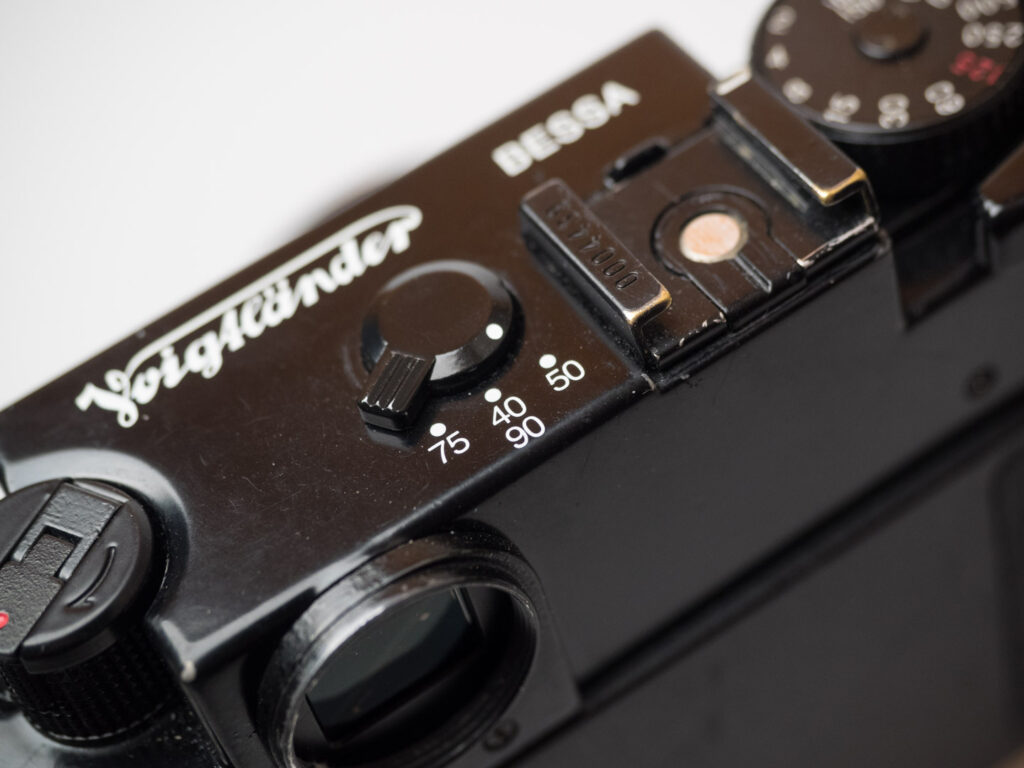
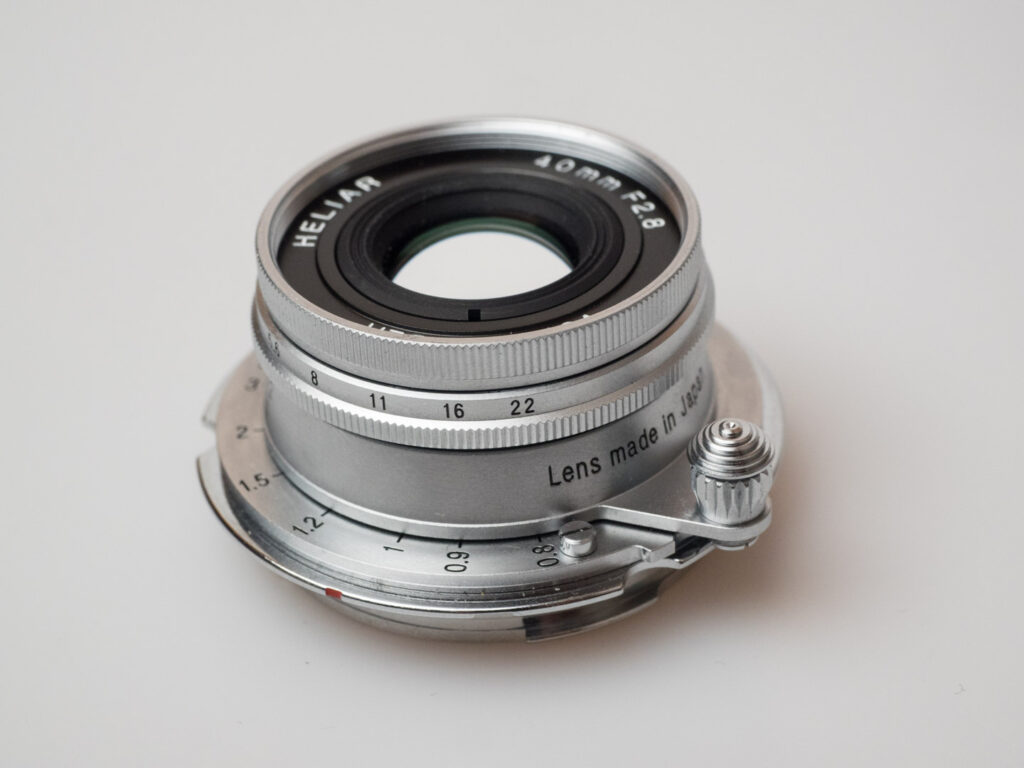

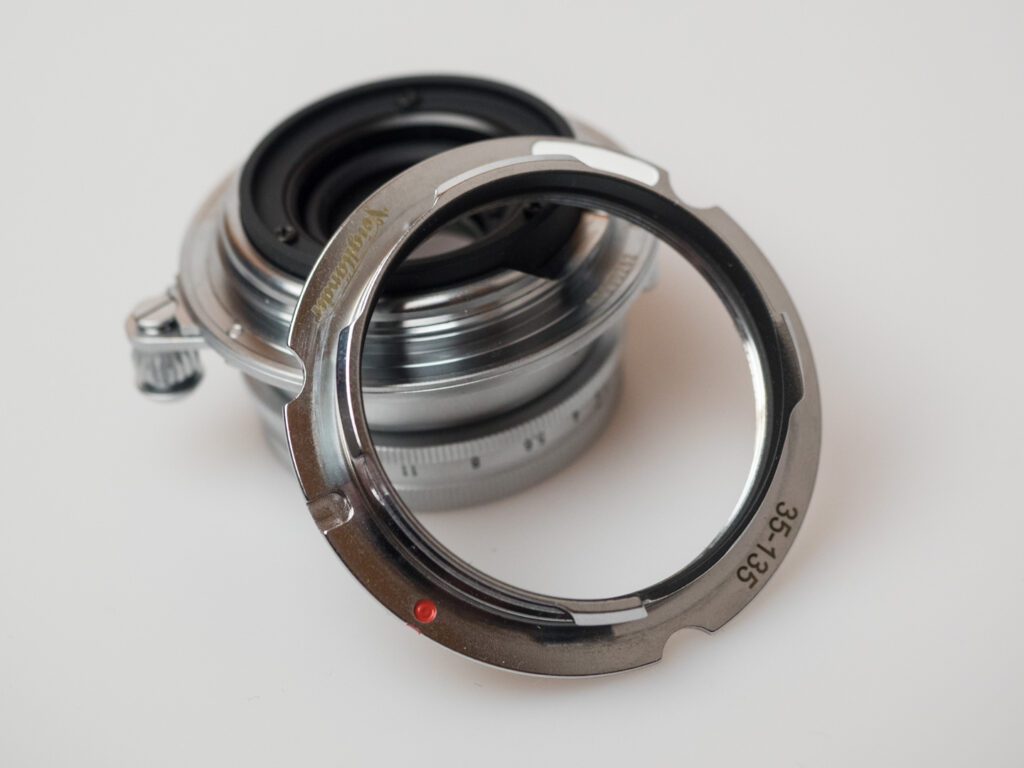
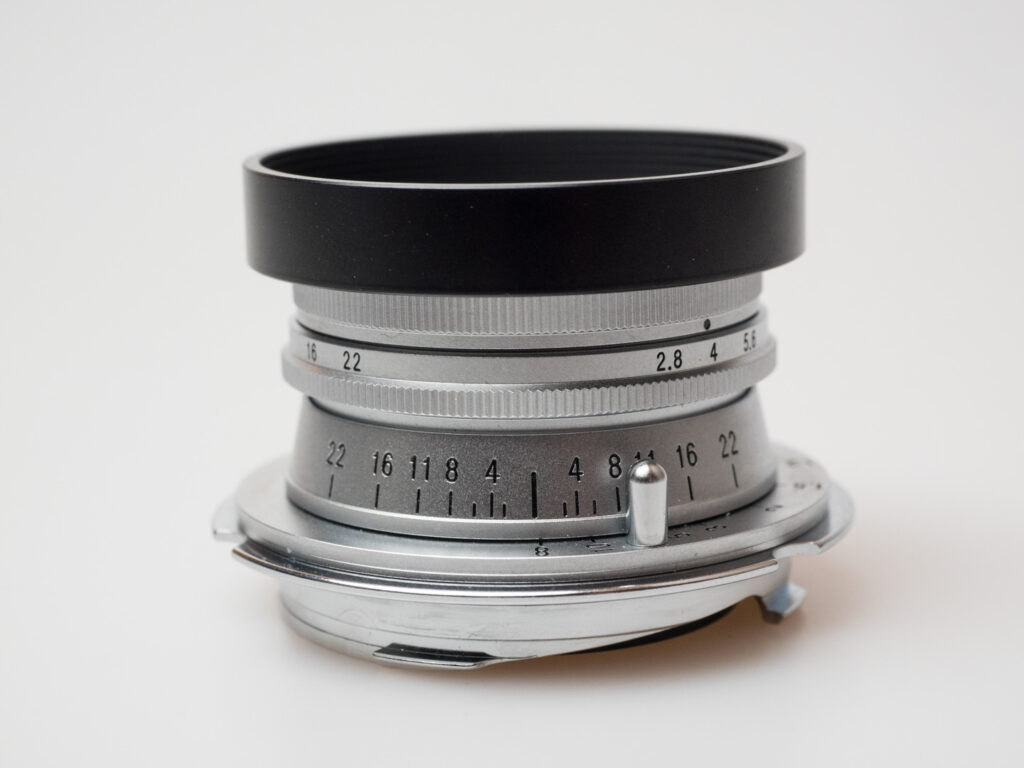
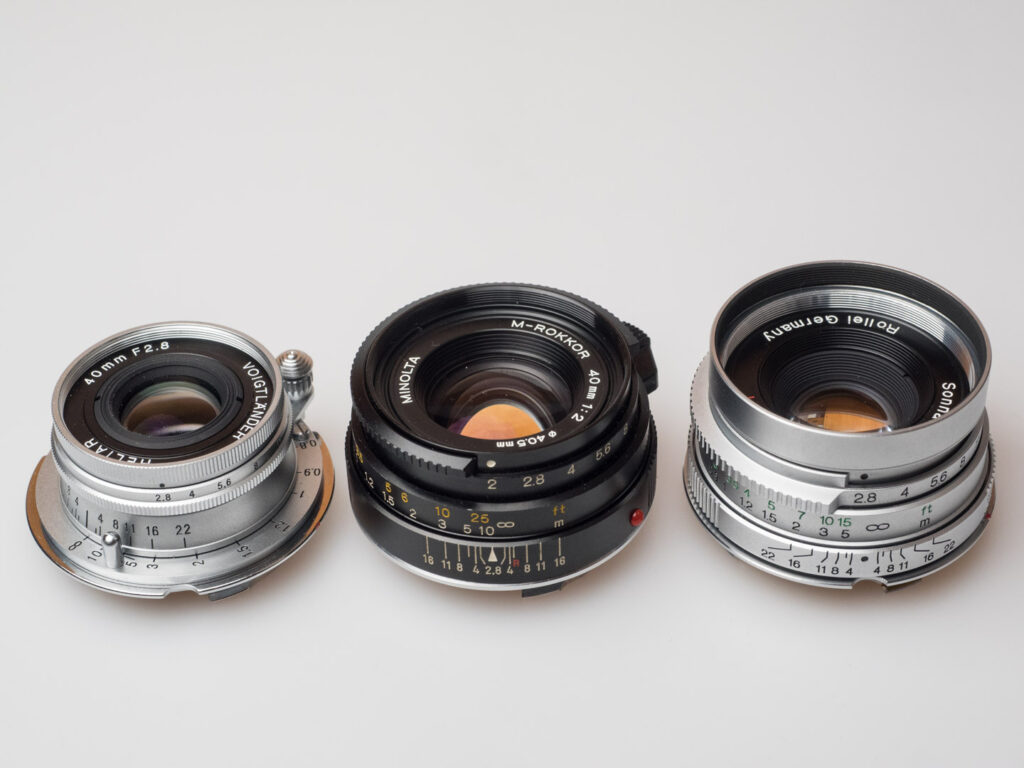
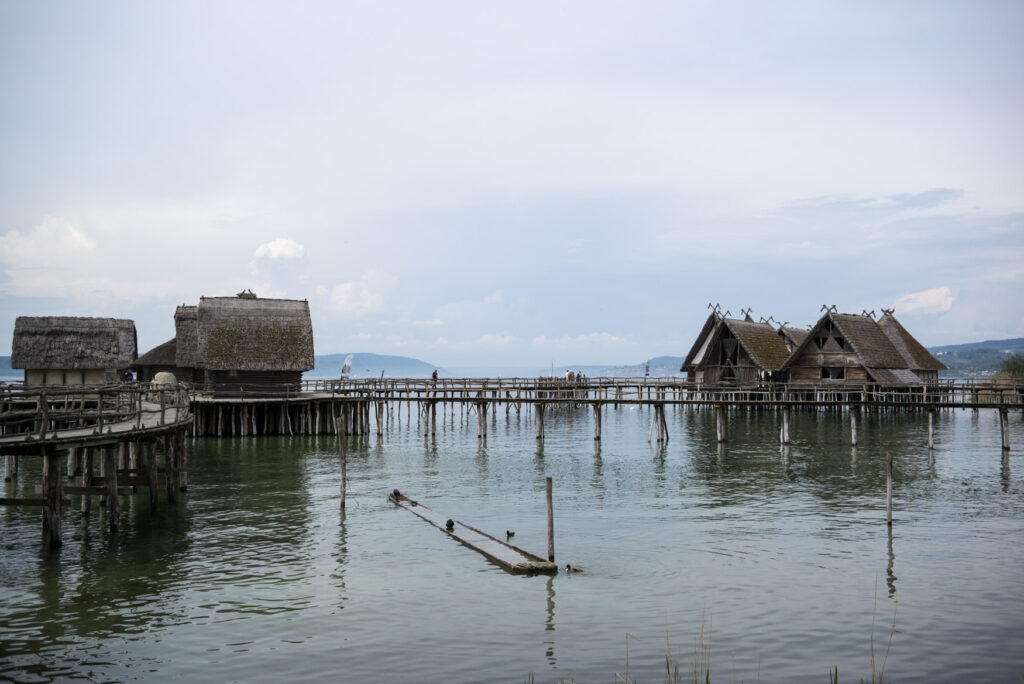
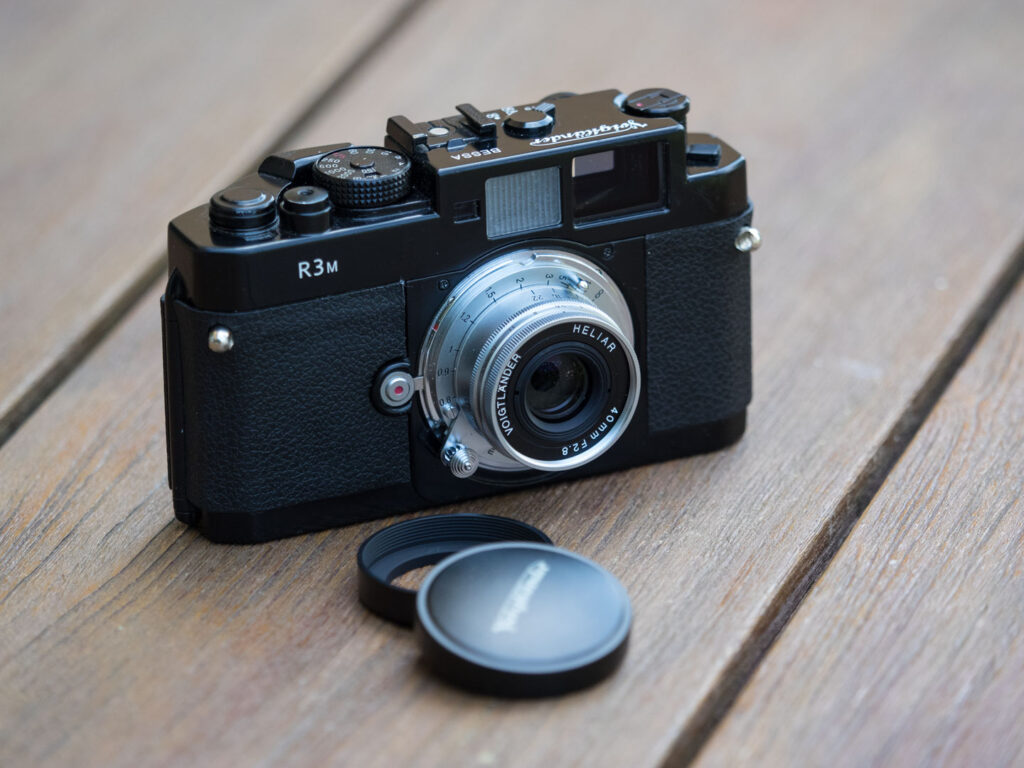
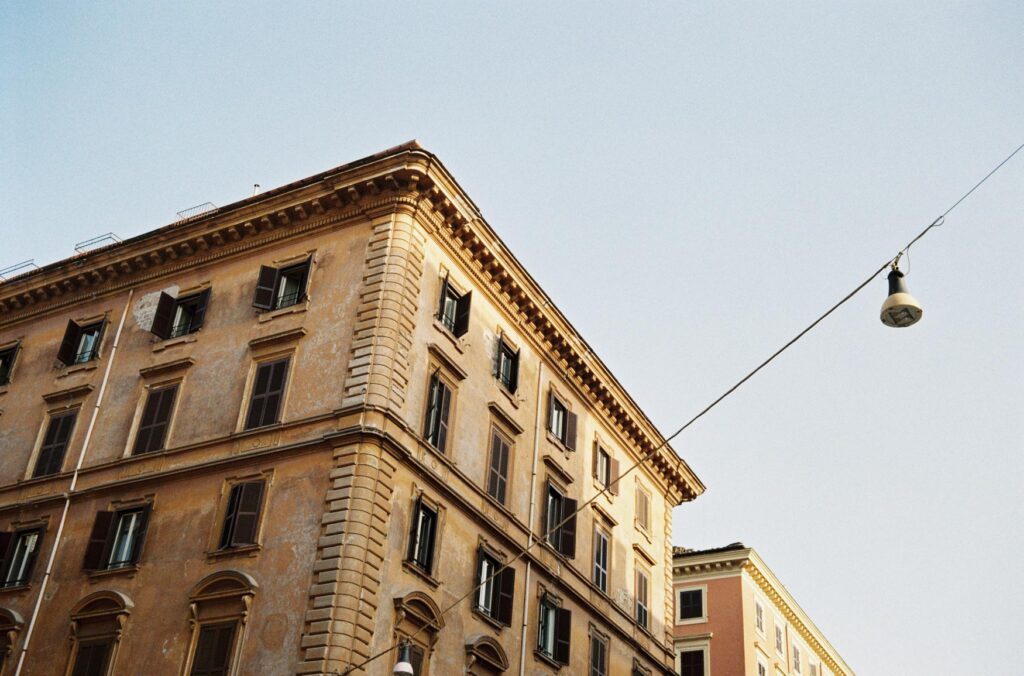
Dear Jörg-Peter,
I’m late answering but I’m hooked to your review and going back to rangefinder photo is growing on me when reading your articles. just waiting to see what the future holds in store.
Thanks for another amazing episode of the M files.
Jean
Nice article taking me down memory lane. I almost purchased one of these shortly after it was introduced. I held one in my sweaty hands twice but purchased a used Leica instead. It is a lovely camera
I agree, SlowDriver. I think the question is if a) the see sufficient demand; b) can source all parts needed at a reasonable price; c) they can offer the camera at “a fraction of the cost” of a new Leica M6. Concerning c), I have my doubts. Manufacturing a camera is, as far as I know, quite another challenge than producing a lens.
They are not exactly cheap on eBay. I hope they re-enter the rangefinder camera world one day. It would make all the sense in the world. Their latest lenses are simply top-notch and a fraction of the cost of Leica lenses.
Er, I’m not at home right now, but perhaps the claim that the Bessa R3M “..is unique for its life-size viewfinder with 100% magnification..” may be not quite accurate; I think that the Cosina-made Epson R-D1 (with its M mount) also has a 100% finder. (Mine’s back on the living-room floor, so I can’t check, sorry).
You are right, David (how could it be otherwise), I checked it on this reliable site: https://cameraquest.com/Epson-R-D1/_r-d1/r-d1_13a.htm. I will add to the text that the R3M/R3A is the only film loading camera with 100% viewfinder magnification. Thanks for your hint. JP
Another valuable addition to your M Files, J-P! When you say “ the aperture ring rotates when focusing (so set your aperture first). ”, you the opposite don’t you?
Farhiz, Thanks for pointing this out. J-P will take a look and amend if necessary.
Dear Farhiz, thanks for your feedback. I hope it is “our” M Files… As for your question: The aperture ring rotates together with the focusing ring (in fact, the whole front element rotates). That means that your focus setting is very prone to misalignment in the moment you change your f stop. For this reason, I strongly recommend to set the aperture first and then the distance. I hope it is clear now – if not, please do write again. J-P
Ahh, that can be annoying at first, but as one becomes familiar with its operation I guess it’ll become second nature.